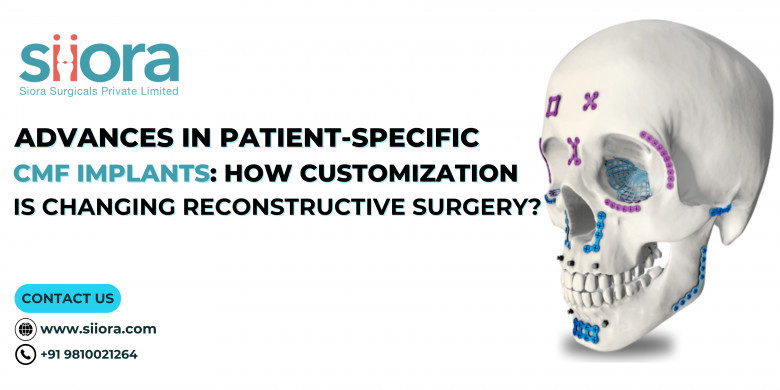views

Reconstructive surgery has entered a new era, one defined by precision, personalization, and better outcomes. At the heart of this transformation are CMF implants, used to repair and reconstruct cranio-maxillofacial structures. What sets modern approaches apart is the rise of patient-specific implants, tailored to fit individual anatomy with unprecedented accuracy. These custom solutions reshape surgical planning, improve results, and significantly reduce recovery time.
From One-Size-Fits-All to Tailor-Made
In the past, reconstructive surgeons worked with standardized implants. Surgeons had to manually shape or adapt these parts during procedures, often under time pressure and with limited accuracy. This meant longer surgeries, higher risk of complications, and inconsistent results.
Today, the process starts with the patient. Using high-resolution CT scans and 3D imaging, engineers can build a digital replica of a patient’s anatomy. From that model, an implant is designed to precisely fit the defect or deformity. This level of customization reduces intraoperative guesswork and aligns more naturally with the patient’s facial structure.
Better Fit, Faster Recovery
One of the most significant benefits of patient-specific implants is how well they integrate with the body. A better fit means fewer gaps, less shifting, and more stable healing. For patients, this often translates to less postoperative pain and quicker recovery.
In complex trauma or cancer reconstruction cases, where precision is critical, custom implants can also restore function more effectively, such as speech, chewing, or breathing. Because the implant is designed to match what was lost, surgeons can focus on fine-tuning outcomes instead of improvising.
Improved Aesthetics and Symmetry
Reconstructive surgery isn’t only about function—it’s also about restoring appearance. Especially in facial surgery, symmetry and proportion matter. Custom implants allow for restoration that’s both structurally sound and aesthetically balanced.
In trauma cases where bone is missing or deformed, achieving symmetry with a generic implant is nearly impossible. With a patient-specific design, surgeons can match the unaffected side or pre-injury anatomy with striking accuracy. This has major implications for self-esteem and psychological recovery, especially for younger patients or those with visible facial injuries.
3D Printing and Advanced Materials
Behind the scenes, 3D printing technology is playing a critical role in making these advances possible. Once a design is finalized, it’s brought to life through additive manufacturing using medical-grade materials like titanium or PEEK (polyetheretherketone).
Titanium offers strength and durability, making it ideal for load-bearing structures. PEEK, on the other hand, provides flexibility and is closer in stiffness to bone, reducing stress on surrounding tissues. These materials can also be porous, allowing bone to grow into the implant over time, improving integration and long-term stability.
Pre-Surgical Planning and Simulation
Patient-specific implants also come with another major advantage: detailed pre-surgical planning. Surgeons can run virtual simulations of the procedure before ever making an incision. This helps identify potential complications, refine surgical steps, and shorten the actual operation time.
This level of planning has made a big difference in multi-disciplinary procedures, where coordination between specialties—like oncology, neurosurgery, and plastic surgery—is essential. Everyone knows the plan, the tools are custom-fit, and outcomes are more predictable.
Challenges and the Road Ahead
Despite the clear advantages, custom implants aren’t without their challenges. Cost and production time can be barriers, especially in emergency settings. Access to advanced imaging and engineering expertise isn’t uniform across all hospitals or countries.
However, as technology becomes more affordable and widely adopted, the turnaround times and costs are expected to drop. Innovations in AI-assisted design and cloud-based collaboration could also make personalized solutions available faster and more efficiently.
Final Thoughts
Patient-specific CMF implants are more than just a technological upgrade—they represent a shift in how reconstructive surgery is approached. Instead of adapting the patient to the implant, we now design the implant around the patient. This simple but powerful change is improving surgical precision, patient outcomes, and overall quality of care. As the field evolves, customization is no longer just a benefit, it’s becoming the standard.
Explore advanced and innovative orthopedic solutions by Siora Surgicals Pvt. Ltd. at the Florida International Medical Expo at booth X21.






















Comments
0 comment